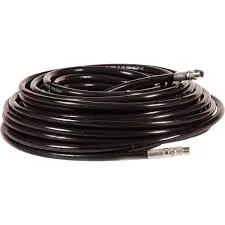what causes power steering hose to burst
What Causes Power Steering Hose to Burst?
Power steering systems are vital for modern vehicles, providing the driver with enhanced control over steering efforts. A crucial component of these systems is the power steering hose, which carries hydraulic fluid to the steering mechanism. However, this hose is susceptible to various issues that can lead to bursting, resulting in a loss of steering control and potentially dangerous driving conditions. Understanding the causes of power steering hose failure can help avoid costly repairs and ensure vehicle safety.
1. Heat and Pressure
One of the most common causes of power steering hose bursts is excessive heat and pressure. Power steering systems work under high pressure, which can reach up to 1500 psi or more. The hydraulic fluid gets heated through the normal operation of the engine and the steering system. When the temperature rises, it can cause the rubber material of the hose to weaken, becoming brittle and eventually leading to cracks or ruptures. Using a vehicle with a malfunctioning cooling system can exacerbate this issue, as the combined heat can deteriorate the hose more rapidly.
2. Age and Wear
Like any vehicle component, power steering hoses have a lifespan. Over time, exposure to various elements such as heat, moisture, and road debris can cause hoses to wear down. Rubber hoses, in particular, age and lose their flexibility, becoming susceptible to cracks. A hose that is discolored, hardened, or has visible signs of wear should be replaced promptly to prevent bursting. Regular inspections can help identify worn hoses before they fail.
3. Corrosion
what causes power steering hose to burst

Corrosion can also lead to power steering hose failure. Power steering hoses often have metal fittings that can corrode over time, especially if exposed to moisture or road salt. If the connections corrode, it may weaken the hose, causing it to burst under pressure. In addition, if the hydraulic fluid becomes contaminated (for instance, with dirt or debris), it can also contribute to hose degradation.
4. Incorrect Installation
Improper installation of power steering hoses can lead to significant problems. If hoses are twisted, pinched, or improperly routed, stress could accumulate in certain areas, leading to premature failure. It is essential to follow manufacturer guidelines during installation to ensure that hoses are positioned correctly and securely.
5. Fluid Contamination
Contaminants in the power steering fluid can negatively impact the integrity of the hoses. For example, the presence of water or other foreign substances can lead to the breakdown of the rubber material, making it more prone to bursting. Regular fluid changes and maintenance are crucial in ensuring that the power steering system operates efficiently and that the hoses remain intact.
Conclusion
Power steering hose bursts can lead to serious safety issues while driving. Understanding the causes of these failures enables vehicle owners to take preventive measures. Regular inspections, timely replacements of worn hoses, and maintenance of the overall power steering system can significantly reduce the risk of a burst hose. By being proactive and attentive to the condition of the power steering components, drivers can ensure optimal vehicle performance and safety on the road.
-
Ultimate Spiral Protection for Hoses & CablesNewsJun.26,2025
-
The Ultimate Quick-Connect Solutions for Every NeedNewsJun.26,2025
-
SAE J1401 Brake Hose: Reliable Choice for Safe BrakingNewsJun.26,2025
-
Reliable J2064 A/C Hoses for Real-World Cooling NeedsNewsJun.26,2025
-
Heavy-Duty Sewer Jetting Hoses Built to LastNewsJun.26,2025
-
Fix Power Steering Tube Leaks Fast – Durable & Affordable SolutionNewsJun.26,2025

